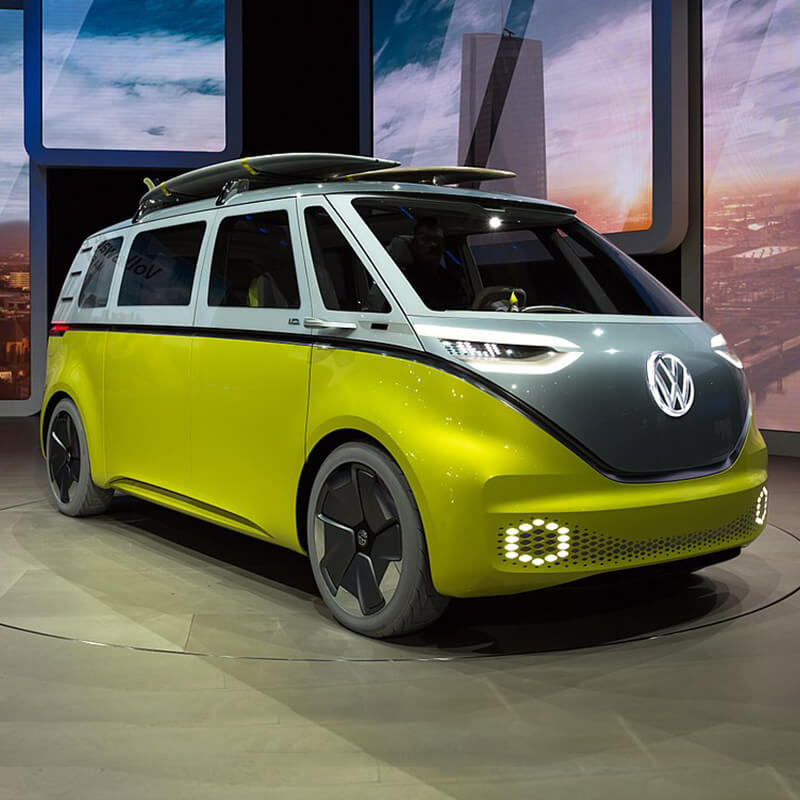Earlier this year VW announced their concept for the ID Buzz, the reincarnated microbus from the 1950s. Right now, it’s just a concept so a lot is subject to change, but what we see now is probably quite close to what we can expect to see in the next 2 years.
The original micro buss became an iconic figure, one we still easily recognize today. So, the ID Buzz has a lot to live up to, a challenge that the exterior designer, Einar Castillo, had to live up to.
“I’m really happy that we achieved such an icon again, without being retro.”
It does look stunning, keeping the solid line that runs around the car into a deep ‘V’ in the front. The silhouette is very close to the original too. They kept the honeycomb pattern that the ID range uses and even made space for ambient lighting on the outside of the car, not something we have seen before.
All the doors are planned to not have any handles but rather use sensors that will automatically open the door for you.
Fully electric and plans to be autonomous
While we don’t know the exact performance numbers and they will probably change closer to release. Right now we know the expected battery size is 111 kWh and can give a range of 435 – 600 km which is rather good.
This ID Buzz plans to be autonomous according to VW and we can see that in the concept. Press the big logo on the steering wheel and it goes right into dash where you can sit, relax and turn your seat right around to face your passengers.
It’s a space you can live in
As a people mover designed for you to partially live in it, space is used incredibly well. You can remove the centre seats, turn them into tables, lay all the seats flat and create a bench or a bed.
“You can play as you wish with the interior space,” according to Castillo. It’s very minimalist too which looks stunning and a lot of the features could be managed from the huge Tesla-like infotainment touch screen.
I’m very excited about the arrival of this car. It will probably fall somewhere into VW’s plans for electric cars in South Africa, which means we may have to wait a little longer than 2022.

